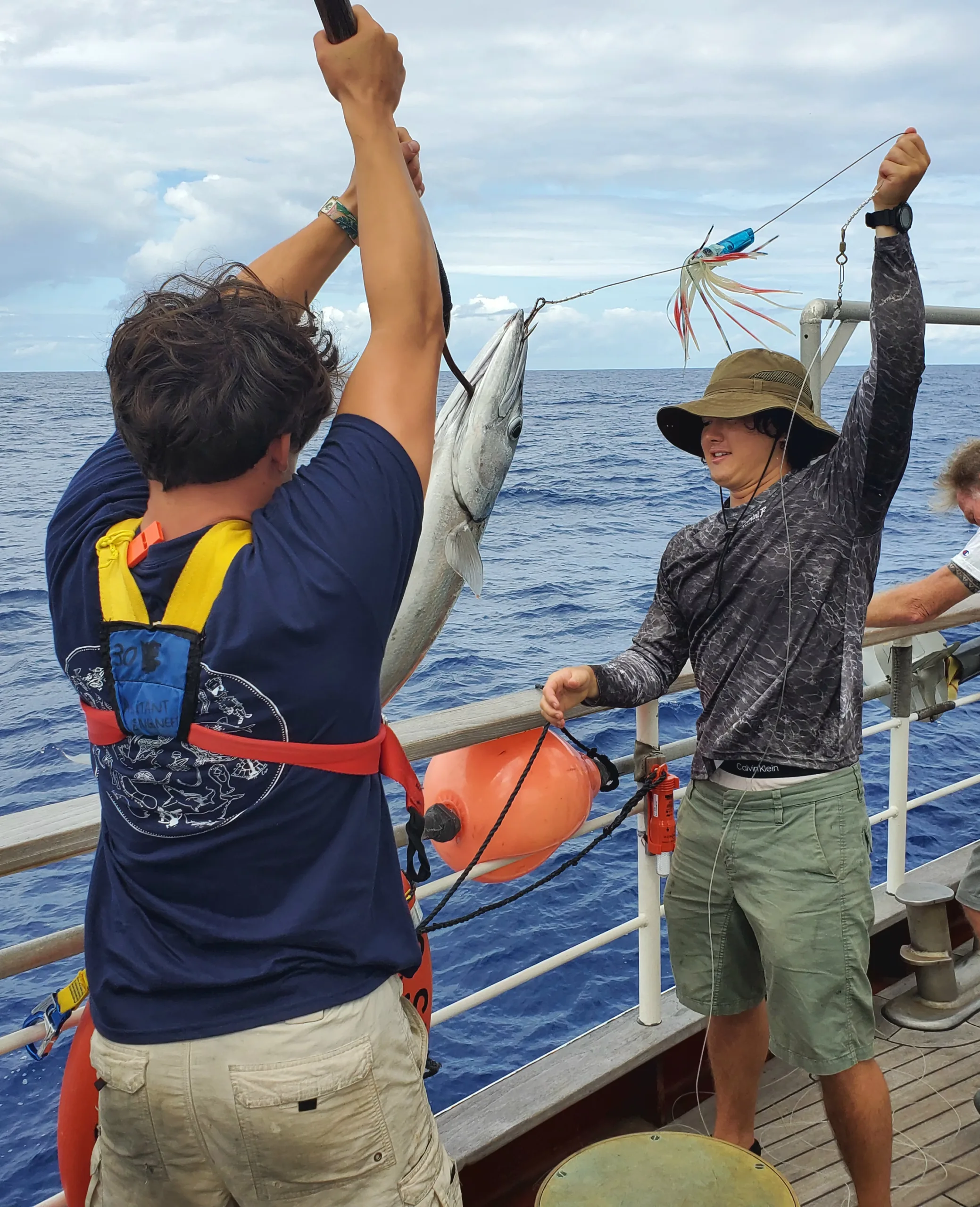Programs Blog
Empirical Research on Seasickness

October 22, 2024
Location: 14˚ 28.2’ S x 179˚ 29.2’ W
Weather: 15 kts from southeast
It’s always the overconfident that suffers the most.
I learned fairly quickly how naïve I was in my ability to conquer the sickness that is cast by the constant motion of the sea. The rocking and rolling of the Robert C Seamans was too much for me by the end of our first day underway, and I remember feeling powerless as I hobbled my way below deck before collapsing in my bunk. I woke with a second wind but by the time I made it above deck I saw my fellow classmates down for the count, stationed next to the leeward railings, and felt my imminent demise. To remedy this, I took a seat and stared off in the distance at the horizon, which helps by keeping your head in a steady position.
Basically, seasickness is caused by a sensory conflict between the eyes and the inner ear. While at sea, the constant rocking of the boat causes the vestibular system, which is the part of the inner ear that deals with movement and balance, to signal the brain of motion, but because the ocean’s surface is constantly changing and there’s no fixed points it is difficult to visually judge movement. As a result, a sensory conflict arises in the brain due to differing sensory inputs and the individual experiences nausea. So when you look out at the horizon or distant clouds it helps relieve that nausea for a little because they are stationary.
But staring off into the distance only helps when you can maintain such for as long as possible, so inevitably I was sent to the task of easing the fore stays’l outhaul as I was yet to yak. I immediately threw up once I finished easing the line. Back on the quarterdeck alongside my fallen comrades, I found it very pleasing to lie down and began to doze off, as that was the only thing that seemed to fully alleviate my nausea. Closing your eyes helps because it cuts off that sensor. Something my half-conscious state forgot to acknowledge was the sun, which is much more intense as we were within 15 degrees of the equator. So as I was deck-ridden I had no care that the entire left side of my body—the right being covered by the shade of the railing—was exposed to the sun. The burn was an accumulation of about three hours of sun, and as described by one of my classmates the complexion of my pale, white skin with the bright, red burn looked like Neapolitan ice cream. All in all, a pretty rough start to our voyage, but there is no adventure without challenge. Now about a week and a bit since setting off from Fiji, my burns are healing, and I’ve finally gotten my sea legs as my initial seasickness has subsided, for the meantime.
Avery St. Clair, University of Hawai’i Hilo

Recent Posts from the Ships
- SEA Writer 2022, Magazines From the Summer SEA Quest Students
- PIPA Alumni Reconnect with Children of Kanton
- Woods Hole Welcomes Incoming Class of PEP Students
- Muhlenberg Student Finds Perfect Study Abroad Experience with SEA Semester
- SEA Student Describes Pacific Exploration for University of Denver News
Programs
- Gap Year
- Ocean Exploration
- High School
- Science at SEA
- SEA Expedition
- SEAScape
- Pre-College
- Proctor Ocean Classroom
- Protecting the Phoenix Islands
- Sargassum Ecosystem
- SPICE
- Stanford@SEA
- Undergraduate
- Climate and Society
- Climate Change and Coastal Resilience
- Coral Reef Conservation
- Marine Biodiversity and Conservation
- MBL
- Ocean Exploration: Plastics
- Ocean Policy: Marine Protected Areas
- Oceans and Climate
- Pacific Reef Expedition
- S-299 Summer Session
- The Global Ocean: Hawai'i
- The Global Ocean: New Zealand